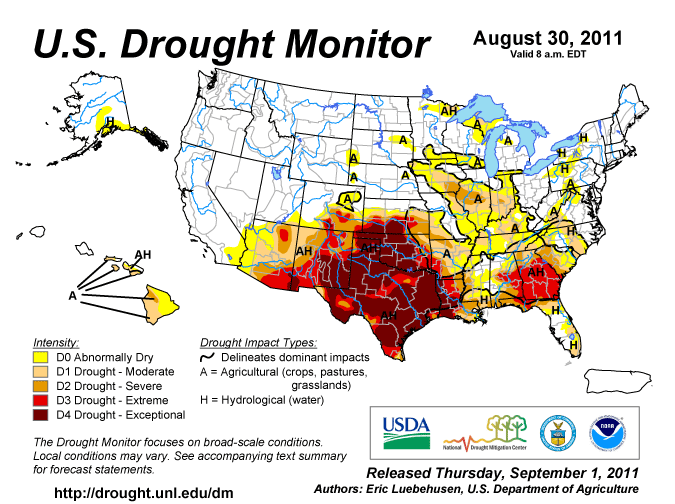For the current water year, Oct. 1, 2010, through the end of August, I’ve had 4.39 inches (11.15 cm) of rain at my house in Albuquerque’s near northeast heights. That’s 51 percent of the mean going back to the 1999-2000 water year. Just one of the months, December, was above my long term mean, and nearly all that came in a single storm. I remember it because the roof leaked – 1.41 inch in a single night. Another way of putting it is that nearly a third of the rain this year came in a single unpleasant burst.
We just can’t win.
It’s not actually the driest first 11 months of a water year in my little personal instrumental record. In 2001-02, we had just 4.33 inches (11 cm even) over the same October-August stretch. That was year one of the epic two-year drought that killed so much of the piñon-juniper woodlands of the Four Corners. Dave Breshears did a nice job with that story:
At an intensively studied site within the region, we quantified that after 15 months of depleted soil water content, >90% of the dominant, overstory tree species (Pinus edulis, a piñon) died.
Driving across the high country here, you can still see the dead trees from back then. (A lot of them haven’t burned in the years since.)
I don’t keep a temperature record for my yard, but the big guys’ thermometers suggest it’s been a hot year here in New Mexico’s Middle Rio Grande Valley, which is the sort of thing Dave was looking at back in 2005 when he was trying to assess the effects of the remarkable 2001-03 event. It wasn’t just dry. It was warm:
This recent drought episode in southwestern North America may be a harbinger of future global-change-type drought throughout much of North America and elsewhere, in which increased temperature in concert with multidecadal drought patterns associated with oceanic sea surface oscillations can drive extensive and rapid changes in vegetation and associated land surface properties.
Worth noting: the forecasters are starting to talk seriously about another La Niña winter.

